- Home
- Chinatown Bangkok
- Lhong 1919
Lhong 1919
preserving the Chinese heritage
By Eric Lim
廊 Lhong 1919 consists of a cluster of old warehouses and a pier built 168 years ago on the west bank of the Chao Phraya River just across from Talat Noi and Yaowaraj, Bangkok's Chinatown.
To the casual visitor passing this place on a Chao Phraya River boat, it appears to be just another tourist attraction decked with red lanterns along the river with crowds of camera snapping visitors.
This place holds a significant segment of Bangkok's history and the history of the early Chinese immigrants to old Siam¹. Let's find out more about the cultural legacy of Lhong 1919.
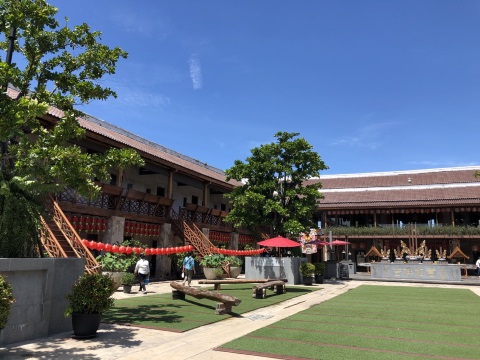
View of Lhong 1919 from the courtyard
Note:
¹As early as the 13th century, the country we now know as Thailand was known as Siam and this name remained in use right through till the early 20th century though with many changes to the original boundaries.
In 1939 Premier Field Marshall Phibun Songkhram changed the name to Thailand (land of the free). After World War II this change was legislated in 1948 and in 1949 the name Thailand was officially adopted and internationally recognized and has remained so till today.
The Steamship Pier
The first half of the 1800's saw a boom in trade with China. The invention of the steamship at the turn of the century drastically changed the pace of sea travel with greater capacity and faster turn-around times. This also resulted in more Chinese immigrants to SE Asia.
Steamships started calling in Bangkok. Back then, all the foreign trading nations had their own ports except the Chinese; the European merchants used the Asiatique pier, the Japanese used Surawongse pier.
A member of the Bisanputra family with the rank and title of Phraya Phisansuppaphol was an investor in steamships. In 1850 he converted a plot of land of 9,600 sq. m (2.37 acres) on the Chao Phraya River across from Talat Noi near Chinatown into a pier for Chinese steamships.
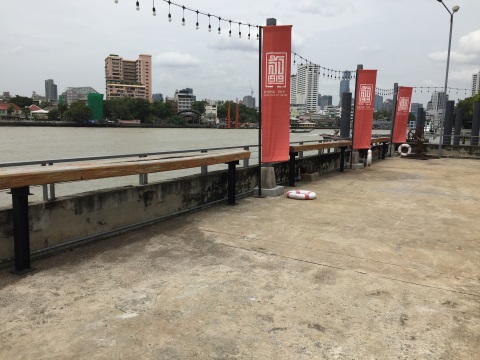
The pier today, it's called the Wanglee Pier now
In addition, a shrine dedicated to Mazu (chao mae ma jo or chao mae tubtim in Thai) the goddess of the sea was built just behind the pier together with warehouses and offices with a built-in area of 6,800 sqm (1.68 acres).
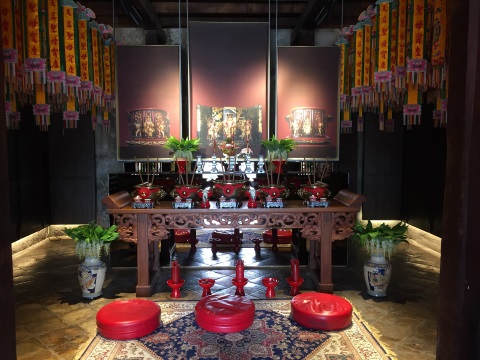
Mazu Shrine upstairs
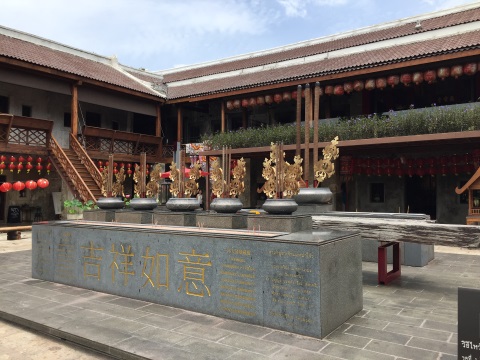
Altar to Mazu in the courtyard
This steamship pier became the main entry point for Chinese immigrants and a trading hub for Chinese merchants. The warehouses were used to store imported goods, provide offices for immigration officials to register immigrants and a place for merchants to display their goods.
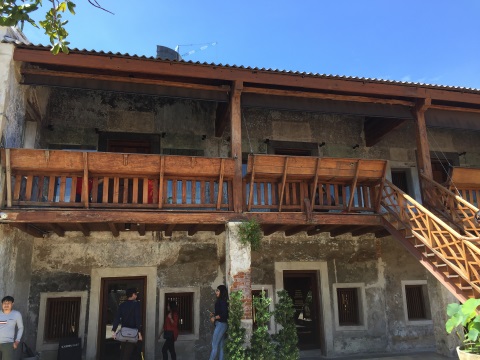
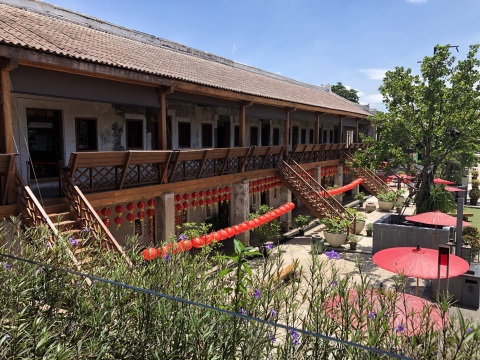
The old warehouse
This place became known to the local Chinese as "huay jung long"² in the Teochew dialect spoken by the majority of the Chinese immigrants in Bangkok.
When King Rama IV ascended the throne in 1851, the British were demanding that Siam open up her markets for British traders. In 1855 Sir John Bowring arrived in Bangkok to renew these demands with the threat of force if they were not met.
King Rama IV realized the limitations of Siam's position in relation with the West and also saw what happened to Asian countries who resisted the West.
Within two weeks on 8 April 1855, a treaty was signed which allowed the British the right to:
- Trade in all Siamese ports,
- Reside and own land in Siam,
- Move freely about Siam,
- A single duty of 3% for all imports and 5% for all exports.
- It also gave extraterritorial rights to British subjects (exempting them from Thai law) a galling condition that was only removed after World War I in 1919.
This agreement subsequently became known as the Bowring Treaty. It resulted in opening up Thailand for trade with subsequent treaties with France, Japan and the USA.
With these treaties the royal monopoly on trade was abolished. However, there were advantages to Siam as well. Siamese rice could now be exported to the British colonies.
As a result, rice exports increased 10-fold from 60,000 tons per year in 1850s to 660,000 tons per year by the turn of the 20th C. Over the same period, the land used for rice cultivation increased from 9,280 sq. km (2.3 m acres) to 14,400 sq. km (3.5 m acres), an increase in 55%.³
The steamship pier that Phraya Phisansuppaphol built was now operating at full capacity.
Note
² The name of the steamship pier in Chinese is火船 廊 pronounced "huay jung long" in Teochew (Chaozhou), "huo chuan lang" in Mandarin and "huay chun lang" in Hokkien (Fujian)
The first two words, "huay jung" mean steamship or vessel. According to a Teochew friend, the third word 廊 if pronounced "lang" means gallery as in art gallery. If pronounced "long" and taken in the context of the three words, 火船廊 it can mean pier.
³ Reference Thailand – a short history by David K Wyatt.
The Chinese Immigrant
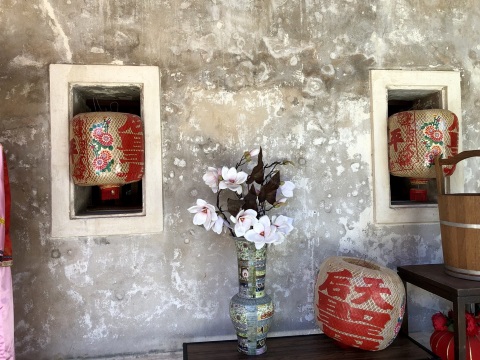
In 1871, a young Chinese man arrived at the steamship pier together with thousands of other immigrants. Like many before him, he was fleeing harsh conditions back in China and seeking his fortune in a new land.
He worked hard and wisely went into rice trading. Benefitting from the booming export trade in rice, he built a rice mill (rong si) right next to the steamship pier and a three more downriver.
He adopted the name Wanglee and in 1881 built his family mansion next to the steamship pier. Today, the Wanglee family that he started is into its sixth generation in Bangkok.
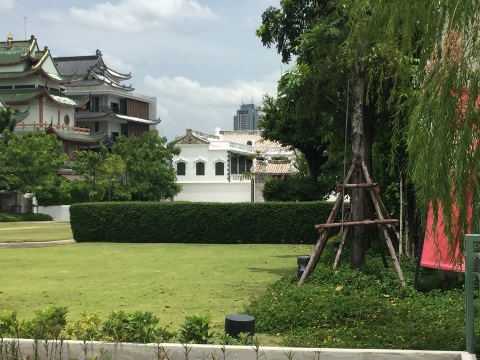
Glimpse of Wanglee House from the edge of the pier
In 1919, Wanglee as he is known now bought over the steamship pier site along with the shrine building and warehouses. The buildings were used to store his agricultural produce, provide office space and living quarters for the employees.
The descendants of Wanglee continued with his business, expanded on it and continued with the use of the buildings behind the pier as before.
The steamship pier continued to be used right to the 21st C but by then the whole place was getting rundown through age and neglect. By 2015, the last tenants moved out and the place became decrepit.
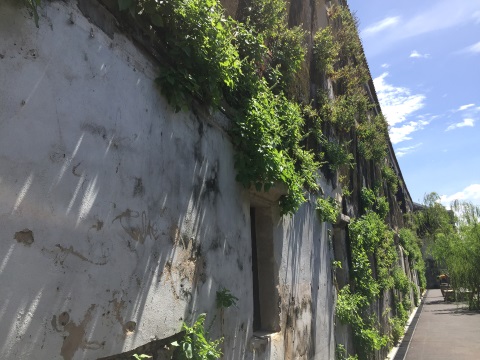
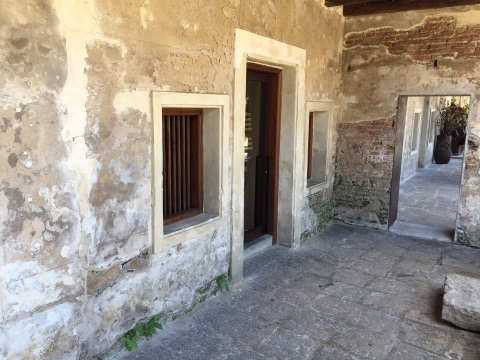
The old walls
The Birth of Lhong 1919
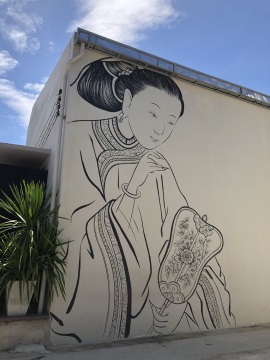
The new look
In 2016 the Wanglee family conferred and deliberated over what to do with the steamship pier. Riverside land was a premium, demolishing the old buildings to make way for a hotel or condominium or shopping mall would have reaped a fortune for the family.
Thankfully, they decided not to do so. They opted to keep the place and preserve it as a heritage. Note that they chose to preserve which is to maintain in its existing state and not to restore which is to repair and renovate to its original condition.
The preservation effort took a full year 2016 – 2017 and was undertaken by one of the family members, Khun Rujiraporn Wanglee, an interior designer.
The contractors have taken care to preserve as much as the original and natural beauty of this historical site as possible by using similar methods and materials. Neither exterior nor interior walls have been painted.
Where the brick construction bore cracks, these were simply filled with traditional waterproof filler and sealant to prevent further damage. Broken wooden parts were replaced by teak wood from other sections that has been dismantled.
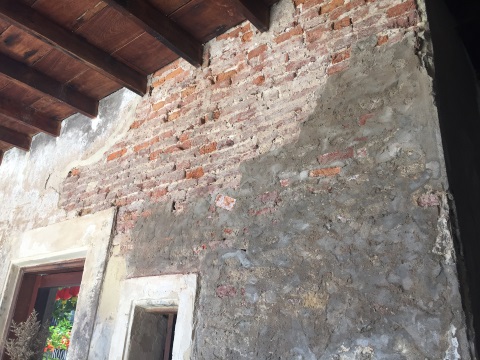
Exposed bricks in the old walls
There was no plastering and painting over the old walls to produce a synthetic version of an old building. The result is an old building as close to its original condition as possible, retaining its original character.
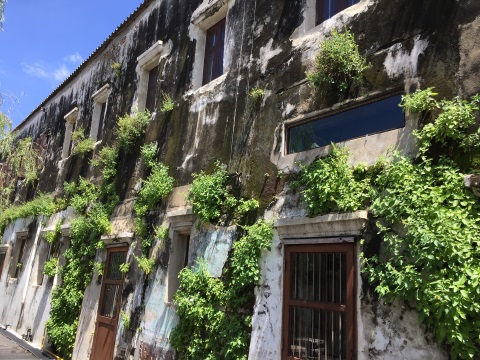
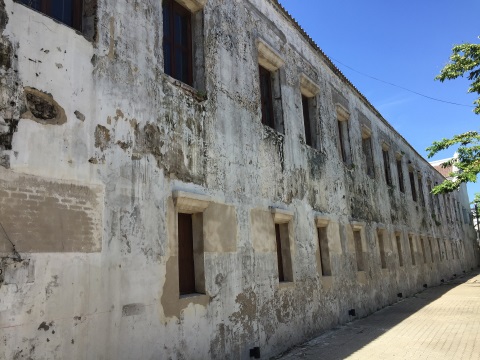
Outer walls left as they are
Upstairs in the building housing the shrine, a surprise was in store. When the old coats of paint were washed off the external walls, old murals, some of which were faded, were revealed around the frames of the doors and windows. A cultural treasure uncovered!
These murals were painstakingly repainted with paints made from natural material. The murals around one window was left untouched to show the condition when first uncovered.
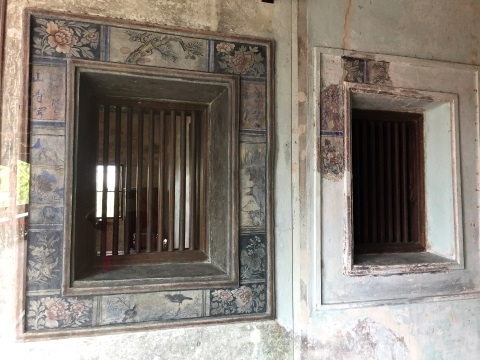
Murals in original condition (right), murals after repainting (left)
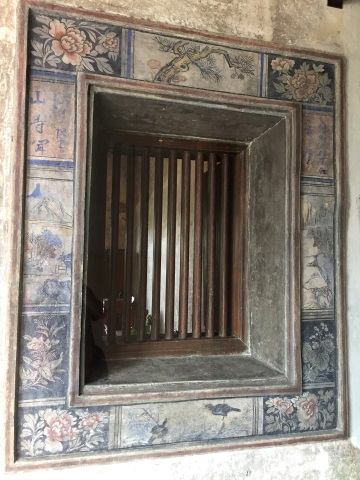
Close up of the window murals after repainting
The last word in "huay jung long" 火船廊 was adopted as the name of the new place, 1919 was added because that was the year the founder of the Wanglee clan acquired the premises. Thus, the old steamship pier was given a new lease of life.
Lhong 1919 officially opened on 2 November 2017 to a grand fanfare. The following day it was open to the public. The Chinese character 廊 became the symbol for Lhong⁴ 1919.

Note:
⁴"Why is the 'h' included in the word "Lhong?" My guess is that when the Teochew word 'long' was transliterated to Thai, it became ล้ง a combination of two sounds, 'lo and hong', hence Lhong.
Spelling the word as 'long' would mislead English speakers to pronounce it like the English word "long".
Retail Outlets in Lhong 1919
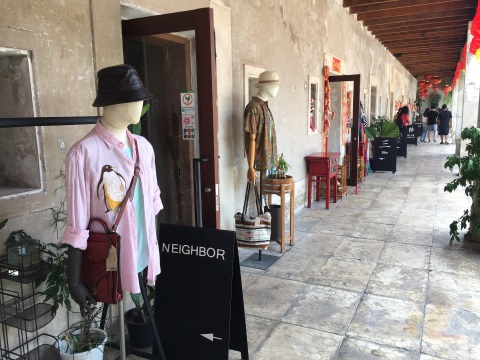
New shops along an old corridor
I would be remiss to all the shopping addicts if I didn't mention some of the retail outlets in Lhong 1919. Here they are some of them.
Art and Craft
Yuyuan - Art and Antiques
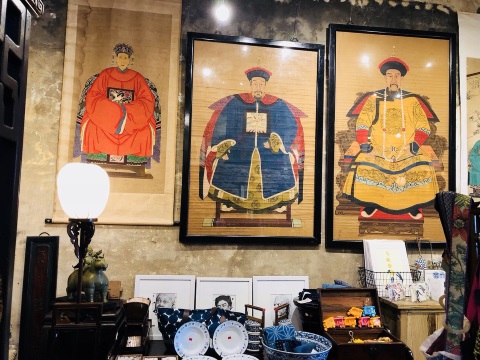
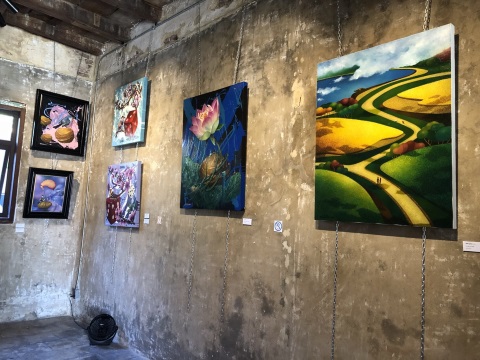
Yu Yuan Art and Antiques – note the inner walls haven't been painted over either
Shopping
Karma Kemet – home furnishings, candles and scented items
Lotus Arts de Vivre – boutique jewellery
Poungphet by BPC – handmade ceramics, household supply
Zenetto - leather goods
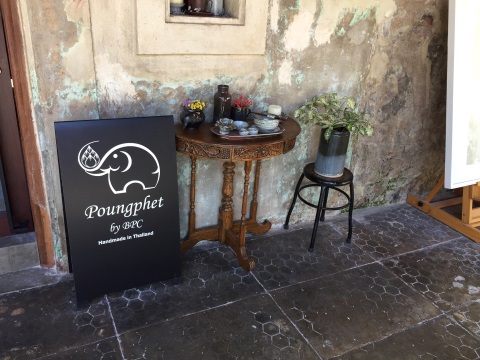
Poungphet – handmade ceramics
Dining outlets
Nai Harng – street food
Plearnwan Panich – desserts
Rong Si Rim Nam - seafood
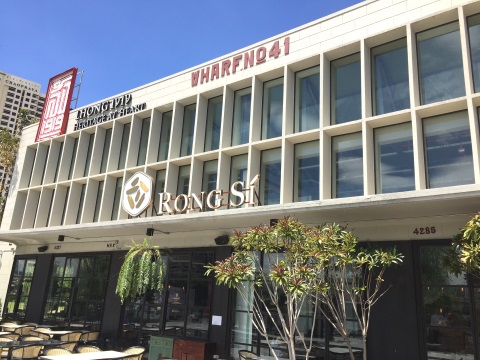
Rong Si dining by the riverside
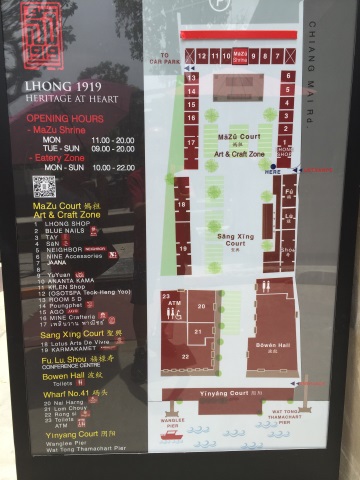
Complete list of retail outlets and locations
Lhong 1919 - An Architectural and Cultural Heritage
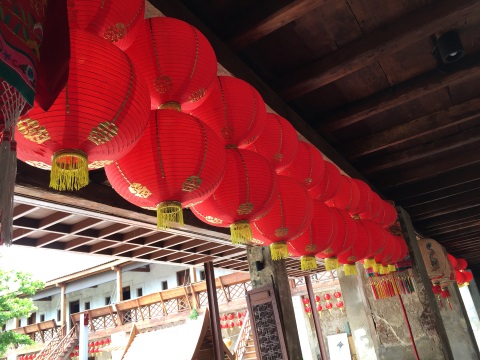
Lhong 1919 is more than a mere high-end shopping and dining mall. The architecture of the buildings reflects the basic Chinese architecture of the 1800's which falls within the Qing Dynasty (1644 – 1911), the last Imperial dynasty in China before it became a republic.
As Lhong 1919 was built as a pier and warehouse, it may lack the elaborate designs of palaces and residences. However, the basic features are still there:
- Bilateral symmetry the whole structure can be divided down the middle into two identical halves.
- The structure encloses a courtyard, as the place is going to be a pier one side is left open.
- The most important building faces the front, hence the building housing the shrine faces the front, the warehouses are to the side.
- According to the rules of Feng Shui or Chinese geomancy the back of the building should ideally be against high ground and the front should face water. The building should be on a square or rectangular plot of land.
This is the Chinese architectural style called San He Yuan, combining three buildings into one with a courtyard. The result is a 'U' shaped structure enclosing a courtyard with the open end of the 'U' facing the front, the river.
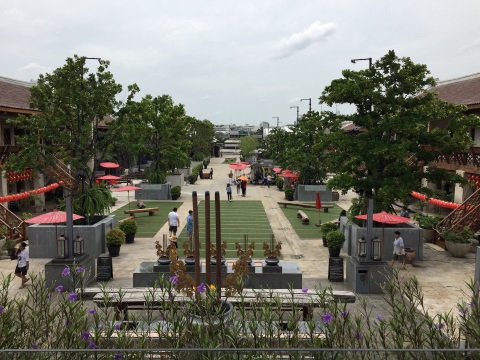
View of the courtyard from the shrine building looking towards the river with warehouses to the left and right. From the centre of the shrine building extend a line straight out to the river and the structure will be divided into two identical halves.
The building at the base of the 'U' is the shrine building housing the shrine of Mazu, goddess of the sea worshiped by fishermen, seafarers and those who have to travel by sea.
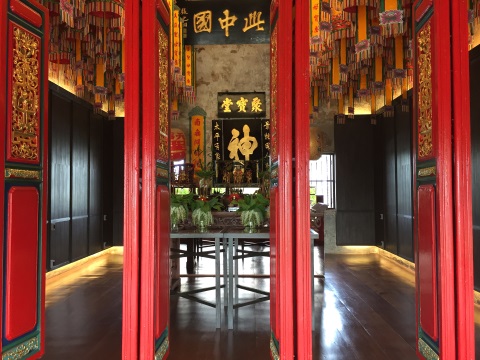
Mazu Shrine upstairs
The shrine consists of three statues brought by ship from China and installed when the buildings and pier were built:
- A young girl who healed the sick and ensured safety during sea travel
- The goddess Mazu who brings good fortune to businesses.
- The empress in heaven full of kindness and compassion.
Generations of sea travelers have prayed at this 168-year old shrine upon their safe arrival and for those who have to return to China, a safe journey home.
At the far end of the ground floor corridor of the building housing the shrine is a corner with a TV and benches. Take a few minutes to watch the short video on the history of Lhong 1919. It's in Thai with English sub-titles and provides useful background information for your tour.
Upstairs in the shrine building, rooms have been decorated to look like rooms in an old Chinese home in the 1800s, e.g. literature room, dining room, living room and the bedchamber.
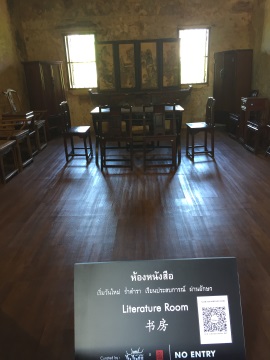
Literature room
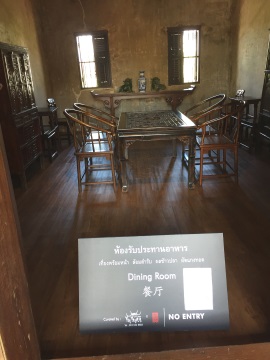
Dining room
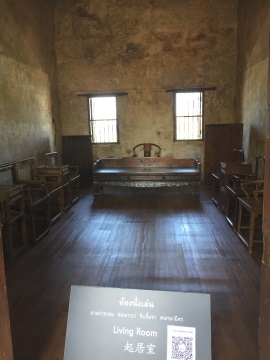
Living room
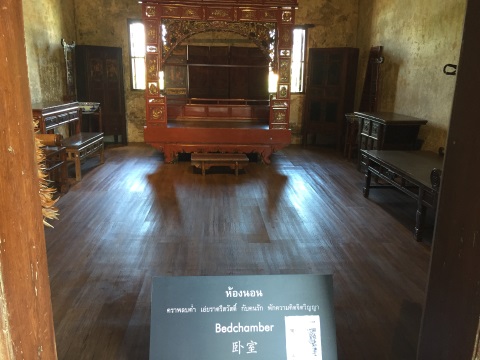
Bedchamber
I have left the best to till the end. These are the beautiful murals found around the door and window frames. These murals were covered with paint for more than 160 years. Here's a close up of some of them.
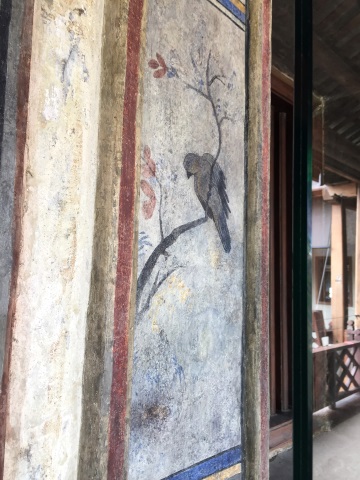
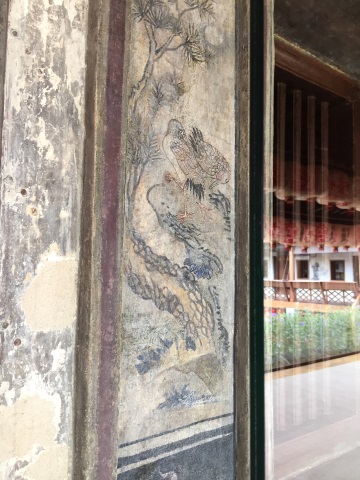
Birds are a favourite subject as a pair of birds signify
faithfulness and eternal love
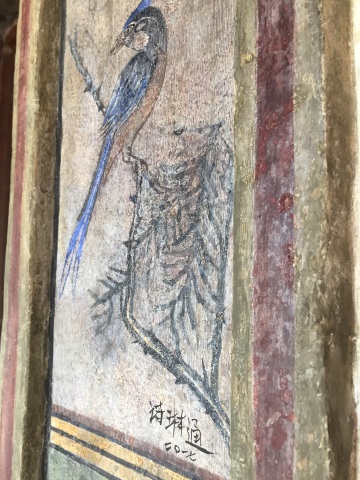
In June 2017, HRH Princess Maha Chakri Sirindhorn visited Lhong 1919 during the preservation works. She left her signature in Chinese in the bottom right corner of the mural with the date 2017.
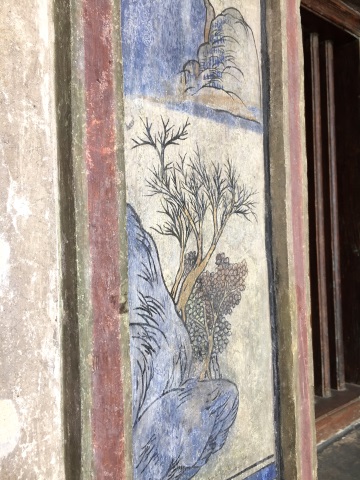
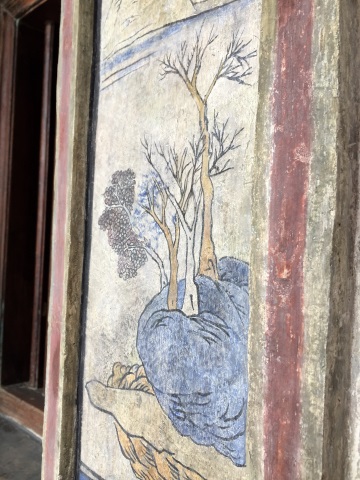
The beauty of these landscape murals lies in the sheer
simplicity of the strokes
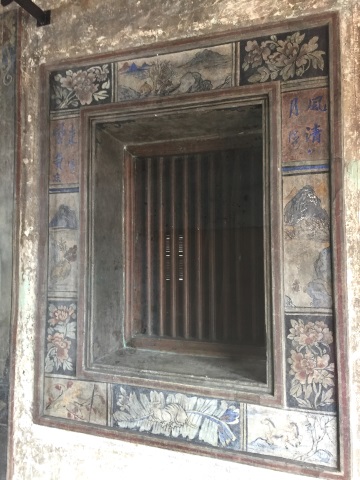
A complete window from another angle
The upper floors of the warehouse buildings are still vacant. It would be fitting if some of the rooms were converted to a museum displaying old photographs of what the place used to look like.
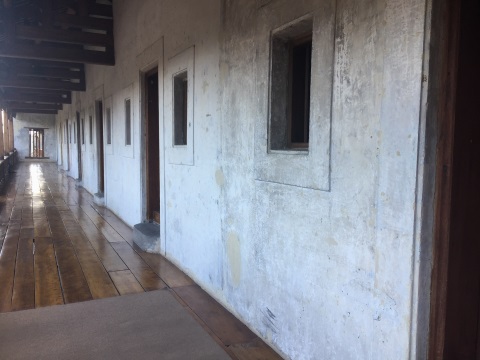
Vacant upper floor of the warehouse block on the right
It was a very informational and interesting experience touring Lhong 1919, it's like a walk through the corridors of history.
Lhong 1919 is more than a family heirloom, it's preserves the heritage of the Thais of Chinese origin and what's more it's a cultural treasure of the nation.
Map to Lhong 1919
If the map doesn’t appear, click on this link
Address
Lhong 1919
249 Chiang Mai Road
Klong San District
Bangkok 10600
Tel 091 187 1919
Opening hours – 0800 – 2200 hours
How to get to Lhong 1919
By car
Cross the Taksin Bridge – Charoen Nakhon Road – Somdet Chao Phraya Road – Chiang Mai Road.
Parking is available in a spacious carpark next to Lhong 1919. It's free for the first hour and 50 baht per hour for subsequent hours. If you spend more 500 baht at the shops, ask the staff to stamp your parking ticket to provide free parking for three hours.
By the skytrain
Take the Dark Green Line (Silom Line) to S7 Krung Thonburi Station and take taxi or tuk tuk there.
By boat
Take the Chao Phraya tourist boat for 50 baht per journey or 150 baht for a one-day river travel pass. The tourist boat stops at the pier in Lhong 1919. The piers served by this service are indicated in the chart.
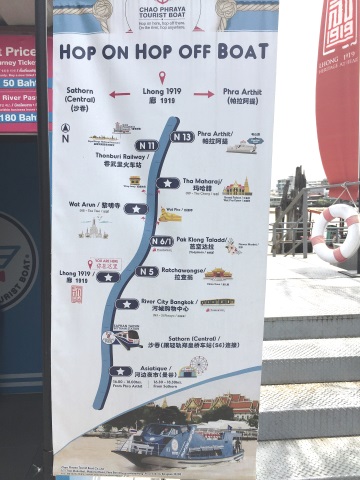
Chao Phraya tourist boat piers
To return to Chinatown Bangkok.
My Journey through Thailand Part I The First Steps
This is my second e-book and the first in the series of travel journals on my trips to explore the various provinces in Thailand. This edition, which covers my travels from late 2009 to mid-2013, will guide you to historical sites, cultural monuments and exquisite Thai handicraft, across a vast spectrum of cultural and ethnic diversity.
You can have a virtual tour with this e-guide book or take the first steps yourself in this journey through Thailand.
My Kindle e-book





